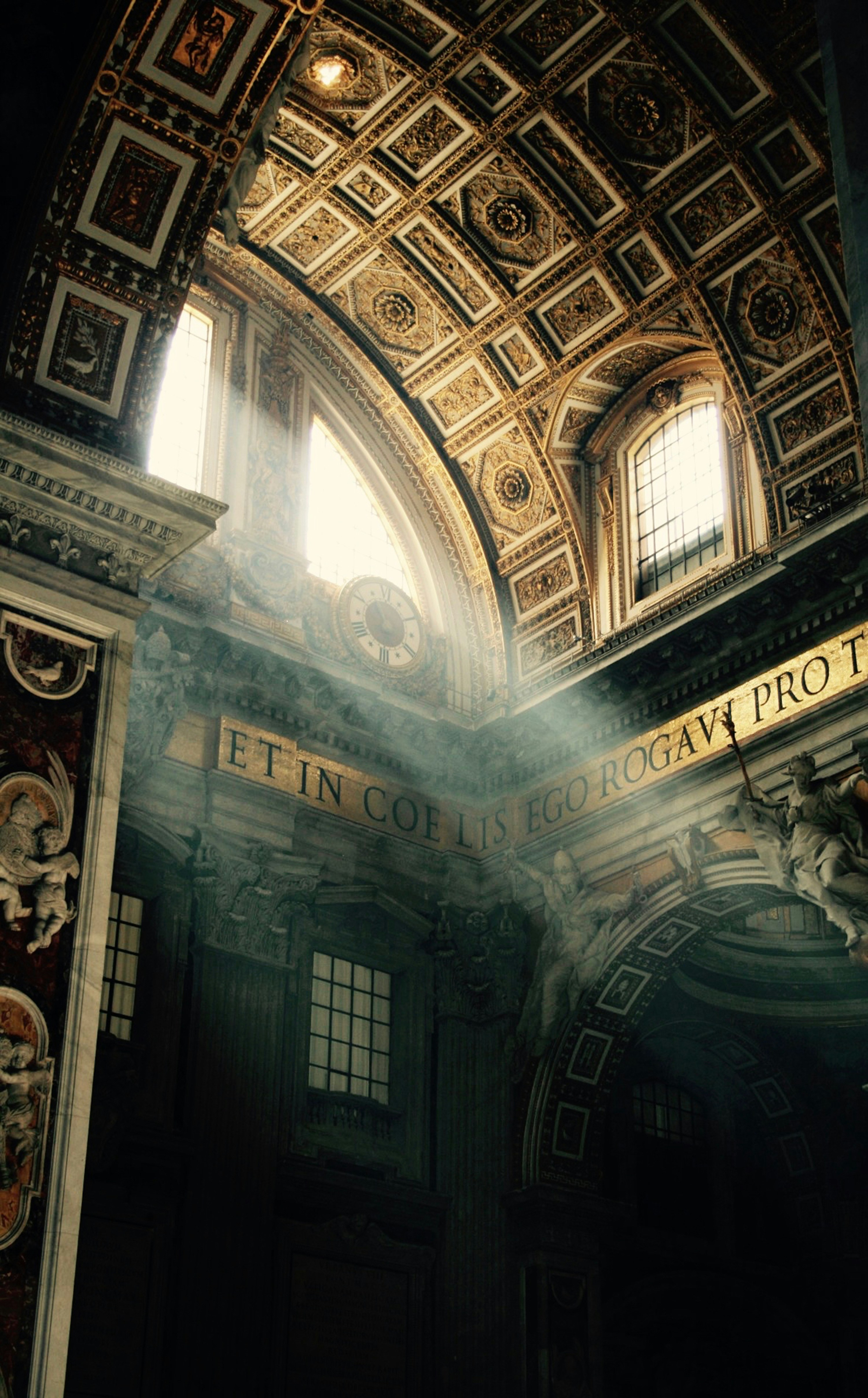Grand Tour of Italy: How Tourists Invented “La Bella Italia”
From the 16th century, British aristocrats began visiting Italy setting the foundation for the modern tourism industry.
Long viewed as a culturally enriching destination, Italy has built its reputation on an invaluable collection of art and architecture amassed over millennia.
Each year, between 65 and 75 million tourists choose the Mediterranean peninsula as a place to travel to, attracted by a heritage spanning from Roman archeology to Renaissance cities and a romantic idea of “beauty” as some sort of glue keeping together the fabric of society.
It wasn’t always like this — the concept of “la bella Italia” developed thanks to travelers who observed and described the country with foreign eyes.
In fact, Italy wasn’t even a nation when European visitors began identifying the territory stretching below the Alps as a network of cities unified by a rich history of art production. As early as the 16th century, traveling to Italy to discover cultural wonders became a widespread pastime among the upper classes of Britain, Germany, France, Poland, and Russia.
The rite of passage that would later become known as the Grand Tour played a pivotal role in the invention of Italy as a key destination for cultural tourism, shaping perceptions of travel that persist to this day.
This Grand Tour saw young men of wealth and status embark on extensive journeys across Europe, with Italy as their central focus, pursuing art, culture, and philosophical ideas believed to be tools of personal growth, both spiritual and intellectual. Through their letters, diaries, and guidebooks, these early tourists contributed to the romanticization of cities such as Venice, Florence and Rome — a fascination that laid the groundwork for the modern tourism industry.
From Pilgrims to Tourists
The idea of traveling to Italy in search of knowledge, to educate oneself in concepts of taste, or simply for leisure is relatively recent. The Grand Tour contributed to changing the way people traveled throughout Europe, popularizing tourism as an activity able to provide both inspiration and social status. But traveling to and through Italy was far from a novelty when the Grand Tour began.
Since the early Middle Ages pilgrims had crossed the country on their way to the Holy Land, contributing to the development of routes that would shape many of Italy’s great cities. Pilgrims had different ways of reaching Jerusalem — they could either get to Venice and board a merchant ship across the Mediterranean or, as did the poorest believers, walk through the whole Peninsula to Puglia and embark on the overseas journey from Otranto.
Christian pilgrims journeyed to Jerusalem during the three centuries following the death of Jesus, but such flow changed dramatically during the reign of Constantine (305-337), Rome’s first Christian emperor. Besides Jerusalem, Rome grew to become Europe’s center of Christianity, building institutions, collecting relics and officializing rituals. Constantine converted to Christianity in 312 CE, following a military victory that he perceived as a blessing from Christ. Christianity was legalized shortly after, and a program of building churches throughout the Empire made Rome the new center of the Christian world.
Pilgrims walking to Rome followed the various Vie Romee that intersected in Europe, including the Via Francigena running across the Alps to Piacenza, Lucca, Siena, Viterbo and eventually the Vatican. People would stay away for months, or even years, with no certainty of returning home. Hospices and hospitals began dotting the key cities on the Via Francigena, together with taverns and markets catering to new arrivals.
The hope for spiritual enlightenment guided the pilgrims in the Middle Ages, but as Europe entered the modern era things started to change and a new way of thinking about travel set its roots starting from Britain.
The Grand Tour: A British Institution
English physician Andrew Boorde published his First Book of the Introduction of Knowledge in 1547, a text that reads as a precursor to the modern travel guide and marked a shift in the interests of European travelers. Throughout his life, Boorde traveled extensively through Italy, but also Germany, France, Spain and Portugal, collecting a vast amount of information that would inform not only pilgrims, but readers looking to learn about the customs, culture and geography of the continent. The Introduction of Knowledge gave way to a new literary genre that would influence how Italy is perceived.
Great interest in crafts, artifacts, architecture, and art began to spread among the British upper classes and travel grew to become an educational activity meant to groom the future ruling classes. The reign of Elizabeth I (1558-1603) transformed travel into a core element of self-development — the future elite must live this experience in order to understand diplomacy and construct favorable international relations.
It would take a few decades before the Grand Tour would become known as such. Philosopher Francis Bacon promoted the idea that experiencing the world first-hand was an essential part of the coming-of-age experience. In Of Travel (1612), he invited young adults to go abroad, network with foreign aristocrats, and note down all knowledge that could be useful to lead a country. It was with Richard Lassels, however, that the term was first used. Lessels, a catholic priest, visited Italy five times between 1637 and 1668, and by the time his Voyage to Italy was published in 1670, the Grand Tour had solidified and was taking more and more people to Southern Europe.
Lassels had fallen in love with Rome where he had spent months on end and even met Gianlorenzo Bernini, one of the city’s greatest living artists. He had traveled south to Naples and lived in Venice, where he described his fascination with a city built above water. It didn’t matter that each one of these cities functioned as a separate state — for foreigners, Italy was an entity united by its artistic drive.
In the 18th century, the number of British men traveling abroad for leisure and education increased vastly, thanks partly to the information collected by authors of the likes of Lassels. Travel accounts played up the beauty of cities like Venice, Florence and Rome, but made clear that the Grand Tour was also a status-building project for individuals willing to stand out in society. Samuel Johnson said that “a man who has not been in Italy is always conscious of an inferiority, from his not having seen what it is expected a man should see.”
A Grand Tour Itinerary: Venice, Florence & Rome
The Grand Tour of the 17th and 18th centuries was a slow journey. Trains did not exist and carriages covered less than 50 miles a day. Typically, British youths would travel to Paris across the English Channel and then enter Italy surpassing Alpine passes to tour Venice, Florence, Rome and occasionally Naples, stopping in Italy for up to three years to learn the language and establish diplomatic connections. Conflict, diseases and theft were all obstacles to be considered, which could alter the itinerary at any time.
Venice and the Invention of the Souvenir
The northernmost city of the classic Grand Tour itinerary, Venice was often the first stop for visitors traveling in Italy. To reach the Serenissima, tourists coming from northern Europe would have to cross treacherous alpine passes around Mont Cenis. This part of the journey was not something grand tourists looked forward to, as altitude areas were still perceived as dangerous — an appreciation for mountain scenery would only emerge later, during the Romantic period. Once in Italy, travelers would visit Turin, then Padua, before continuing onward to Venice and the Adriatic.
The allure of Venice resulted from the city having maintained its medieval character up to the 18th century. Its historic treasures include the grandiose Piazza San Marco, where visitors could enter Basilica di San Marco and stand in awe under the architectural marvel blending Romanesque, Byzantine and Gothic elements, before visiting the Doge’s Palace. Diary entries typically include a tour of the city through its canals — tourists would hire a gondola and visit workshops of glassmakers while floating between islands.
While the main goal of the grand tourist was to gain knowledge of Italian cultural tradition, more materialistic needs quickly developed giving rise to a flourishing souvenir industry. Visitors desired to bring a piece of Venice back home to have physical proof of the journey and alleged intellectual achievement.
Books, rare coins, sculptures and furniture were all prized collectibles, but no memento was as sought after as the paintings of Venetian artist Canaletto.
Born Giovanni Antonio Canal, Canaletto spent his days in central Venice depicting atmospheric scenes of the city’s best-known landmarks on canvas. Piazza San Marco, the Rialto Bridge and the Doge’s Palace hit by soft morning light under cloudy skies were among recurring themes. Among the first foreigners to notice Canaletto’s talent was English banker Joseph Smith, who in the 1730s began commissioning serene Venetian scenes for the artist, hoping to sell them to British collectors and enthusiasts.
Partly thanks to Smith, Canaletto’s work quickly became highly requested by British tourists visiting Venice. The idea of souvenirs was relatively new and Canaletto managed to monopolize the market, at least until 1740 when the War of the Austrian Succession broke out and grand tourists stopped arriving in Venice. The prestige of his paintings among British aristocrats, however, didn’t end — Canaletto was invited to move to England in 1746 and spent the following decade painting commissions for his many admirers. Throughout his life, the artist produced over 500 paintings for kings, princes, and dukes — many remain part of the Royal Collection to this day.
Florence, Renaissance and Overtourism
Traveling beyond the Apennines, following a stop in Bologna, grand tourists arrived in Florence, a city enriched by monumental art over the centuries. In the cradle of the Renaissance, the growing flow of tourists arriving from northern Europe could see the city transform under the Medici’s rule. In the mid-16th century, Cosimo I de’ Medici had commissioned legendary architect Giorgio Vasari with the construction of a space attached to Palazzo Vecchio to house the administrative offices of the city. The upper floor of the Uffizi, as the new structure became known, was dedicated to housing the Medici’s collection of art — a series of treasures of inestimable worth.
The Uffizi would open to the public in 1765 — becoming the museum we know today —, but before that young aristocrats with the right connections could organize private tours of the galleries and be among the small minority of people in the world to come in close contact with the works of Michelangelo, Leonardo da Vinci, Botticelli and many other Renaissance greats.
Stay Inspired. Explore the World.
Subscribe to the Wayer Journal and discover a world of inspiring stories and Fernwayer's newest, meticulously crafted private tours.
Besides paintings and sculptures, visitors were especially attracted by the Boboli Gardens stretching behind Palazzo Pitti. One of the most coveted spaces in the city, the monumental gardens were a prime example of how humanist philosophers of the Renaissance viewed the relationship between people, art and nature — the park would influence aristocratic residences all across Europe.
As Jeremy Black reports in his book The British and the Grand Tour, the increase of British tourism in Florence produced the first complaints about an issue that continues to haunt the Tuscan city today — overtourism. It was 1725 when nobleman Francis Colman wrote “I have hardly had one hour to myself this last week by reason of the concourse of English gentlemen that are here at present, of whom there have been above twenty.”
Rome, the Allure of the Eternal City
Among the cities that grand tourists visited, Roman maintained its position as the first destination in terms of importance, just as it had done for pilgrims centuries earlier.
There were many reasons behind Rome’s allure — a rediscovery of ancient myths and classical arts, the spiritual echo of Christian relics, the grandiose projects of the Renaissance and the opulence of the Baroque periods blended in a vast, intricate urban landscape that could take years to fully discover.

Travelers did spend years in the future capital of Italy, to study the heritage of the Roman Empire but also to participate in religious ceremonies in the Vatican, which were gradually opening to non-catholic visitors during the 18th century. The Capitoline Museum was for many one of the early stops where one could acquire knowledge about the archeological riches of the city before diving into ancient outdoor sites and, at times, participating in excavation efforts hoping to uncover new treasures from the past.
It was historian Ferdinand Gregorovius who explained best how many felt as they roamed through the Eternal City for the first time, writing “My first visit was to the Campidoglio and the Forum; later to the Colosseum on which the moon was shining. I have no words to express the storm of emotions I felt then. On Sunday, I wandered here and there, to surprise myself by suddenly encountering this or that building known to me from prints, such as the column of Trajan, the Pantheon, the temple of Vesta, the pyramid of Caius Cestius”.
The Legacy of the Grand Tour
Much has changed since the Grand Tour ended, but its legacy lives on to this day. While travelers of the 17th and 18th centuries may have faced obstacles that no longer exist — months-long journeys through perilous roads, the risks associated with banditry and the lack of reliable information — modern tourists continue to follow the itineraries developed by British and German aristocrats.
Venice, Florence and Rome still form the most popular tourist route in Italy and the very concept of Italy as a culturally enriching destination continues to feed the imagination of millions who travel to the peninsula every year. Industrialization made the artistic beauty, breathtaking views and good food accessible to the masses and sights like the Sistine Chapel, Piazza San Marco, Botticelli’s Venus continue to provide opportunities to boast about one’s privilege once back home as they did 300 years ago. ||

